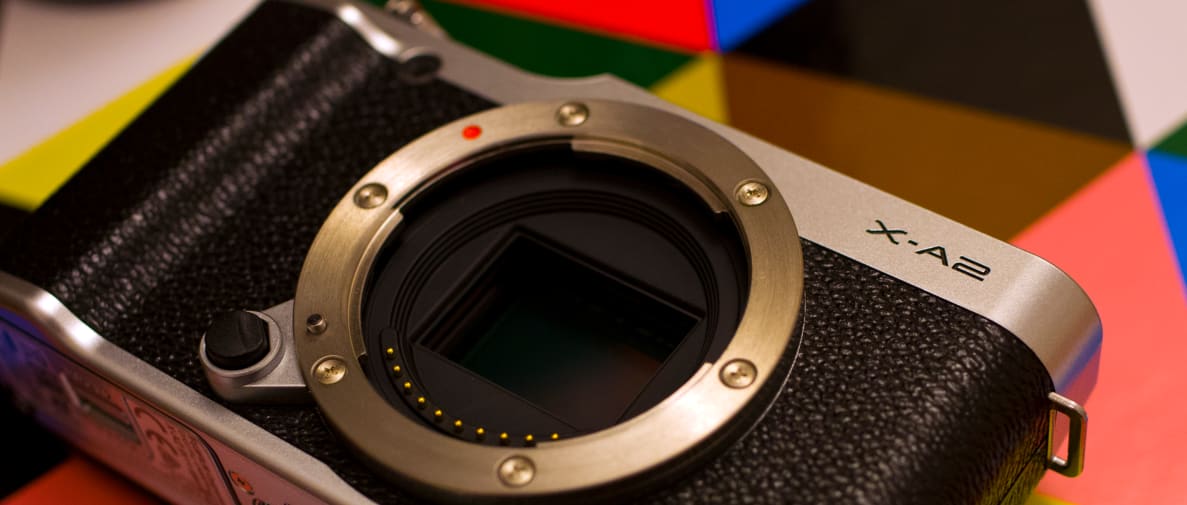Fujifilm's ever-changing mirrorless camera lineup wasn't exactly begging for the addition of a selfie-friendly option, but here we are. The brand-new X-A2 (MSRP $549.99) takes 2013's X-A1 and adds a screen that can flip all the way up to face the front. It's a simple addition, but one that adds a little extra charm to an already competitive package.
Despite the cute additions, the X-A2 still suffers from some of the shortcomings that plagued prior low-end Fuji cameras—cheap-feeling build quality and dumbed-down controls. But with the price dropping to just $550, the X-A2 could be a perfect entry-point for someone who doesn't need advanced controls but wants to dip their toes into Fuji's excellent lens system all the same.
Design & Handling
Approachable, but not up to Fuji's usual quality.
If there was one thing that bothered us about 2013's X-M1 and X-A1 it's that these cameras looked so much better than they felt. Ever since the original X100 years ago, Fujifilm has inspired lust in photography fans thanks in no small part to its dedication to satisfyingly well-built cameras. The liberal use of metal, on top of the decision to lean on old-school style physical controls just lend other Fujifilm cameras gravity that these two entry-level models lacked.
{{ photo_gallery name="tour" }}
The X-M1 and X-A1 were bound to be a disappointment, then, since they swapped metal for plastic in order to keep the price low. They certainly looked like Fuji cameras in press photos, but our excitement was deflated as soon as we laid hands on them. The X-A2 didn't bother us quite so much, but that's largely because we knew exactly what we were getting into. If you're considering the X-A2, the best advice we can give you is that you should seek it out in person to see if it meets your personal expectations.
Even though it doesn't live up to Fujifilm's premium reputation, it's still not a bad little camera. The control layout is very usable, and it's especially well-suited for less experienced photographers. Unlike other Fuji cameras, the X-A2 uses a more conventional mode dial, making it easy to snap back into full automatic mode if you get in over your head. There are also some specific scene modes called out, including portrait, nighttime, landscape, and action. Fujifilm has even included a custom mode on the dial, a feature often omitted on cameras around this price.
{{ photo_gallery name="design" }}
The biggest change that Fujifilm made to the X-A2 was to add that handy dandy front-flipping 920k-dot, 3-inch LCD that articulates to face front, letting your subject see the shot while you frame it. Along with the improved minimum focusing distance of the 16-50mm kit lens (it's a new refreshed version for 2015) the X-A2 is designed to make self portraits super easy to take.
We used this camera in a fairly intense shooting scenario, at the 2015 DIFFA Dining by Design event in New York. This unevenly-lit event featured exquisite table settings with plenty of detail. The X-A2 was perfect for this setting with its light weight and tilt screen. I was easily able to snag high and low angle shots that full-frame DSLR-toting photographers at the event struggled with.
There are two control dials on the X-A2, with the top dial set to control exposure compensation by default. It's handy, but the dial is way too easy to turn. Just handling the camera normally led to accidental changes of exposure, so be extra careful if you have restless hands or your photos may accidentally wind up a tad too bright or dark. The rear, vertically-mounted control dial is good enough, and it's used to change your main parameter in aperture and shutter priority modes.
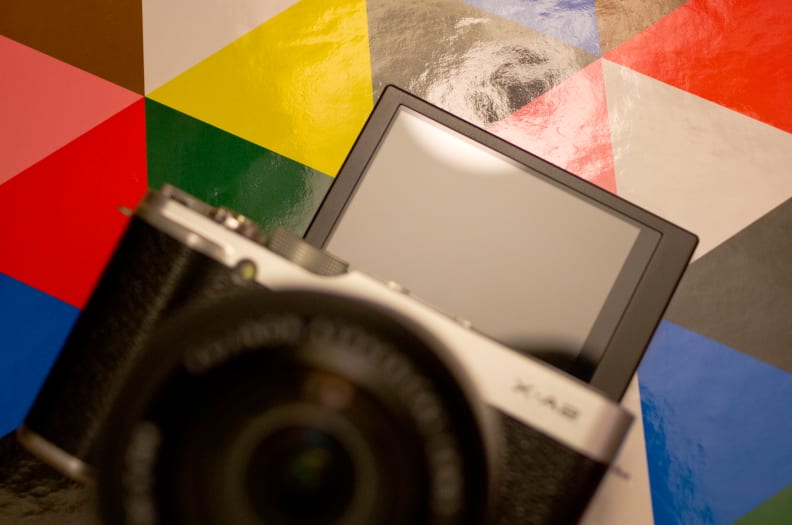
The new selfie screen the X-A2 has works as well as you'd hope.
One big gripe we have with the X-A2 is that the power switch surrounding the shutter button felt like it was going to break. The switch's chintzy plastic and overly firm action meant it was difficult to switch on without knowing (good) but felt like something was about to snap off every time we activated it (bad). We had the same issue with the X-A1 and X-M2 and it's not been remedied.
Features
Almost fully loaded
Fuji knows what the entry-level X-A2's audience is, and has tailored the camera's feature set appropriately. In its enthusiast-grade cameras, you can see that it's all about providing physical dials for things like shutter speed or exposure compensation. In these consumer-level options, the emphasis is on features like scene modes and WiFi. Fujifilm has even dreamed up some options that are wholly unique to the Fujifilm family and you get them in the X-A2 at a reasonable price.
Even though you don't get Fujifilm's acclaimed X-Trans sensors as a part of the package, the X-A2 still packs a very decent 16-megapixel APS-C sized sensor. Fujifilm's signature filmic JPEG color modes are in the mix, which we delight in using every time we get a new Fuji to test. This latest X-series model includes the Classic Chrome look that is the closest you can get to shooting the now-defunct Kodachrome film in 2015.
WiFi is included yet again, and Fujifilm's done a decent job providing what users want from such a feature. You can pair the X-A2 to your phone relatively quickly and offload your photos to social networks from there. The most unique feature allows you to print directly from the X-A2 onto Fujifilm's Instax Mini instant film using the company's Instax Share printer.
It's funny to think of the camera this way, but we'd say that one thing that the X-A2 has going for it is Fujifilm's excellent lens selection. If you're a fan of compact, sharp prime lenses, you'll find a focal length to love in Fuji's system. This year, Fujifilm has a few nice options on tap, including a 16mm f/1.4, a very small 35mm f/2, and a 90mm f/2 that's been designed with portraits in mind.
Performance
Decent, but not class-leading
In the past two years, Fujifilm's cameras have continually impressed us with their improved image quality. The X-A2 might not be the best for your dollar, but it at least keeps up with its family members. You might not get all of the company's best imaging technology, but rest assured that it's more than good enough for average shooting scenarios.
{{ photo_gallery "sample-photos" }}
In my time with the X-A2, I had very few complaints about image quality. It kept up in demanding situations and netted a high percentage of keepers that you can see above. The camera's 16-megapixel APS-C CMOS sensor is good in low light while capturing loads of detail. More densely packed sensors can often eke out more sharpness, but it's always running the risk of worse-looking noise at high ISOs.
Speaking of ISOs, Fujifilm's cameras have a full range of sensitivities to offer with noise reduction that is fully controllable. The only funky part about the X-A2 is that its lowest and highest sensitivities are JPEG-only. Those two higher ISOs ain't pretty no matter how you slice it, however, so you'll want to limit the camera to top out at ISO 1600 in all but the most extreme situations.
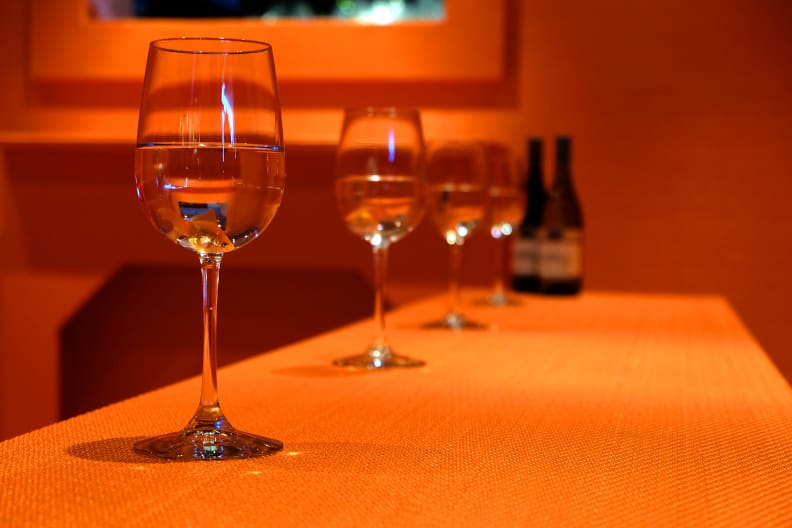
The X-A2 swaps Fujifilm's unique X-Trans color filter array for a more conventional Bayer-type. Even though X-Trans is great for stills, as we saw in the X-T1 and X100T, the unique color filter can create issues when shooting video. We actually saw cleaner, better video from the X-A2 since it is a more ordinary configuration. If it had X-Trans, we're more than sure that you could see more severe, ugly moiré in high frequency patterns.
Unfortunately, you can easily get higher quality video from competing cameras in the same price range. If you want a better hybrid shooting experience, treat yourself to something like the Panasonic Lumix GM1 or even the Nikon D5300. The test video we shot with the X-A2 might be slightly better than other Fuji models, but there's still a lot of detail left on the table. You're also stuck shooting 1080/30p or 720/30p, with no other options available.
Conclusion
There are better choices, but this one's got spunk.
Once you get past the X-A2's plasticky build quality, there's actually a lot to like here. The features are all you'd want from a mirrorless camera, with image quality that's on-par with its competition, and access to a wonderful ecosystem of great Fujifilm lenses.
That said, it's up against some impressive competition. Cameras like the Sony Alpha A5100 ($600) and Olympus's OM-D E-M10 ($700) are similarly priced but with slightly better performance or other improvements—like the E-M10's great viewfinder—that make them more appealing choices. We'd also recommend that you cross-shop with Fujifilm's own wonderful X-E2 ($1000). You get the excellent made-in-Japan build quality, signature retro rangefinder design, with an excellent electronic viewfinder for the full Fujifilm experience. In the scheme of things, the extra money you spend on an X-E2 is about justified given how good that camera is.
But, for what it needs to do, the X-A2 is a fine camera. If light weight and slim proportions rank highly among your priorities, you can pick up the X-A2 for only around $550. That makes it the least expensive new Fujifilm camera you can buy, and we can assure you that your snapshots can look about as good as with the more expensive Fuji models. For that alone it's worth a look, but definitely hold one in your hands before you take the leap.
By the Numbers
Since it's closely related to the Fujifilm X-A1, the X-A2 didn't surprise us with its performance. While it's far from the best camera in its class, what it lacks in raw firepower, it makes up for with charming features and excellent JPEG color rendition.
Color and White Balance
Fujifilm's cameras are all about the sweet, sweet look of real 35mm film. The company's long celluloid heritage comes through strong in the X-A2, with its so-called film simulation modes. Even though there are only five color modes on tap, they're all awesome. We're big fans of the relatively recent Classic Chrome, which looks quite a bit like Kodachrome.
The most accurate color mode onboard is the X-A2's standard mode, which is a bit massaged, but close to ideal. With a saturation of 106.4 and a ∆C corrected score of 2.53, it's very decent indeed. Like we mentioned above, the other color modes, Astia, Provia, and Classic Chrome, all give you incredibly different looks.
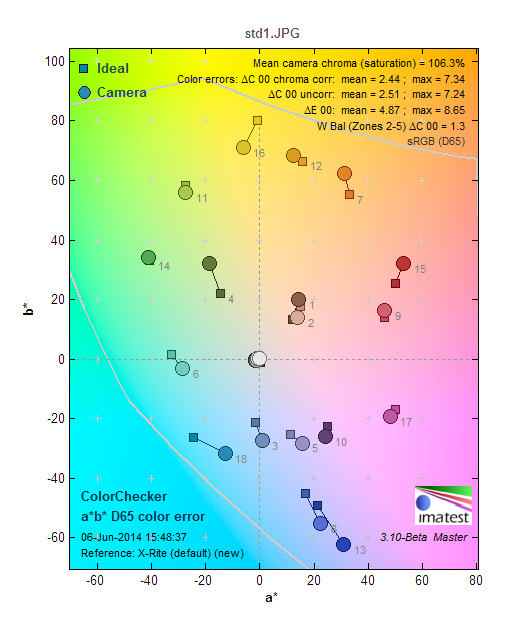
White balance performance we tested in the lab was fairly solid under all but the incredibly tricky Incandescent light scene. In automatic white balance, we saw error consistently off by 2000 kelvins. Manual performance is about as good as you'd want, with very little error in florescent, incandescent, and daylight types of light. Overall, the X-A2 is a capable performer for the price.
Resolution
The Fujifilm X-A2 has a 16 megapixel CMOS sensor with an optical low pass filter. Even though you don't get Fujifilm's signature X-Trans technology here, this sensor is plenty sharp. It should compliment Fujifilm's library of characterful sharp prime lenses perfectly.
We tested the Fujifilm X-A2 with its included kit lens, the refreshed Fujinon 16-50mm f/3.5-5.6 OIS II. While it's not as nice as Fuji's awesome premium XF kit zoom, the 18-55mm f/2.8-4, this lens is no slouch. While you don't get the faster aperture or aperture adjustment ring, it's well suited to the simple, approachable nature of the X-A2.
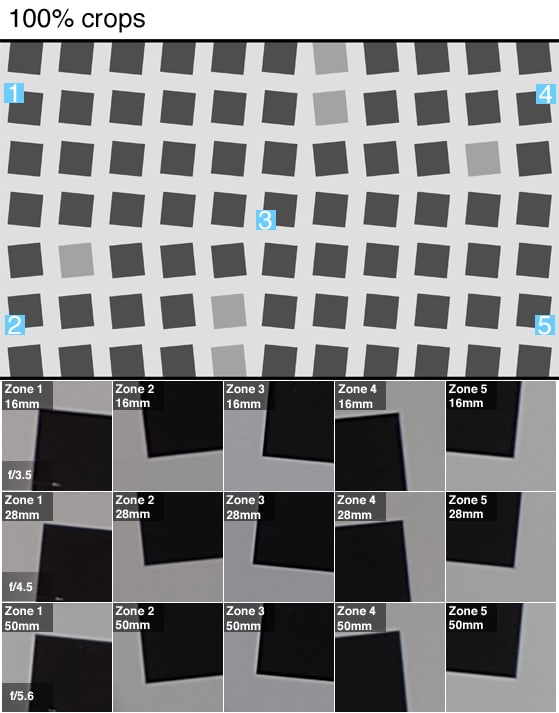
While this lens was able to resolve a decent amount of detail at full wide and full telephoto, you'll see much sharper results from f/5.6 to f/8. Chromatic aberration wasn't much of an issue, which shows that Fujifilm has done a decent job designing it. We did see a lot of oversharpening, however, which shows that the camera's software is also pulling some weight in making the lens seem sharp.
Video
If you're looking for decent video from a mirrorless camera, we'd have to say that the X-A2 is not your best bet. Even though its conventional Bayer-type sensor causes less false color that you'd see from an X-Trans-equipped Fujifilm, it's still not a good choice. This is historically Fuji's weak point, and so, this follows in the footsteps of the rest of the X-series.
Shooting the camera's 1080/30p mode, we were able to measure 700 LP/PH horizontal and 650 LP/PH vertical in bright light. Shooting the same test chart in a low light scenario, detail dropped to 625 horizontal and 600 vertical. The X-A2 required 13 lux to hit 50 IRE, a broadcast standard for the dimmest usable image.
Noise
The 16 megapixel CMOS sensor that the X-A2 has in its plastic body is perfectly fine for most shooting situations. With APS-C sized sensors, 16 million pixels seems to be a sweet spot, providing plenty of dynamic range while keeping noise uniform. It offers up sensitivities from ISO 200 to 6400 with a JPEG-only expansion mode with a Low/100 and two high ISOs at 12800 and 25600.
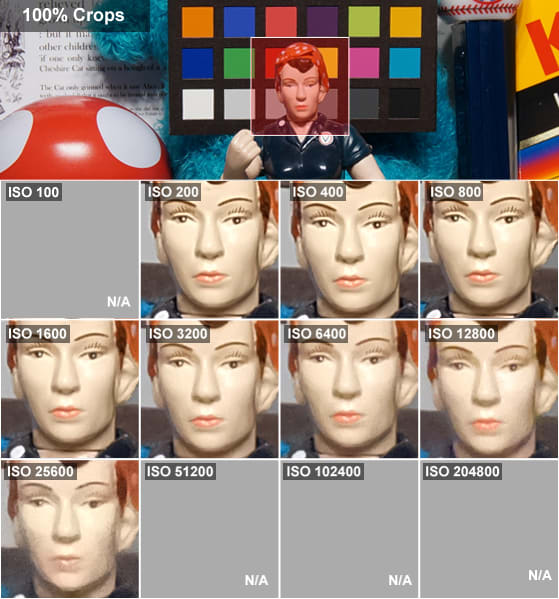
The camera's noise reduction settings are fully customizable, with five different intensities. In its default mode, the X-A2 does a very decent job at conserving detail until you reach higher ISOs. We'd recommend sticking to ISO 1600 in most conditions, and using 3200 for only the most extreme low-light conditions. You'd also be better off getting some faster lenses for this body in order to get the very best quality from the sensor. Even with NR turned completely off, you will only see 1% noise at ISO 1600, which means that the sensor is fairly good at keeping noise down on its own. The default, middle-of-the-spectrum setting keeps noise below 2% until max ISO, so the top two sensitivities end up looking pretty terrible.
Meet the tester
Brendan is originally from California. Prior to writing for Reviewed.com, he graduated from UC Santa Cruz and did IT support and wrote for a technology blog in the mythical Silicon Valley. Brendan enjoys history, Marx Brothers films, Vietnamese food, cars, and laughing loudly.
Checking our work.
Our team is here to help you buy the best stuff and love what you own. Our writers, editors, and experts obsess over the products we cover to make sure you're confident and satisfied. Have a different opinion about something we recommend? Email us and we'll compare notes.
Shoot us an email